September 13th, 14th and 16th 2017
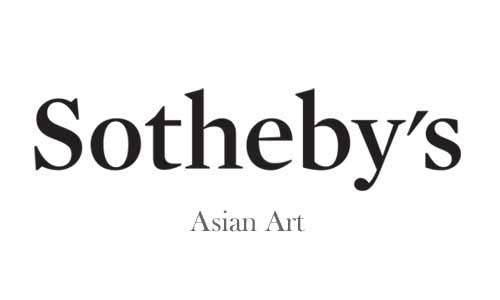
Auctions of Chinese Art This Month At Sotheby's NYC
Three Good Auctions of Chinese Art
Auctions of Chinese art this September will include three at Sotheby's New York. While I haven't the time to go through each lot, I thought I'd share a few of the pieces I find most appealing from a personal standpoint. I picked a "Baker's Dozen" including one I'm not so sure of. You, will no doubt after browsing the catalogs find your own. So let me know in the comments below what struck your fancy.
I also am including one piece bearing an estimate that's totally lost on me, let me know your thoughts.
Shitao (Yuanji) 1642-1718
LOTUS FLOWER AND ROOT
ink on paper, framed
signed Qingxiang Dadizi A’chang, with two seals of the artist, da
di zi, si bai feng zhong suo li weng tu shu
with one collector’s seal of Pang Yuanji (1864-1949), xu zhai
mi wan
54.5 by 62.5 cm. 21½ by 24⅝ in.
PROVENANCE
Sotheby’s New York, Fine Chinese Paintings from the Yuzhai
(Jade Studio) Collection, December 5, 1985, lot 46
$ 60,000-80,000
PROPERTY FROM A DENVER PRIVATE COLLECTION
A FINE ‘CLAIR-DE-LUNE’ GLAZED BRUSH
WASHER
KANGXI MARK AND PERIOD
of compressed circular form, supported on a shallow tapered
foot, the rounded sides rising to an incurved rim, covered
overall with a pale lavender-blue glaze draining to white at the
mouth, the white-glazed base with a six-character mark in
underglaze blue
Diameter 4⅝ in., 11.7 cm
PROVENANCE
Acquired in New York, circa 1985.
$ 60,000-80,000
A FINE AND RARE CELADON-GLAZED
DOUBLE-GOURD VASE
YONGZHENG SEAL MARK AND PERIOD
elegantly potted with a globular lower bulb supporting a slightly
smaller upper bulb with a narrow mouth, covered overall in a
lustrous glaze thinning at the rim to reveal the white body, the
recessed base encircled by an unglazed footring, the base with
a six-character archaistic seal mark in underglaze blue
Height 12¾ in., 32.4 cm
PROVENANCE
Japanese Private Collection (by repute).
$ 320,000-500,000
A FINE AND RARE DOUCAI
CONICAL ‘DRAGON’ BOWL
YONGZHENG SEAL MARK AND
PERIOD
Finely potted, with wide flared sides rising from a short straight foot, brilliantly enameled to the exterior with two five-clawed dragons, one in yellow and the other in green, each in pursuit of a ‘Flaming pearl’, leaping out from a band of turbulent crested waves, and amidst multicolored cloud scrolls and flame scrolls, the base with an archaistic six-character seal mark in underglaze blue
Diameter 8 in., 20.4 cm
$ 200,000-300,000
AN EXCEPTIONALLY RARE AND LARGE
GILT-LACQUER BRONZE FIGURE OF BUDAI
DATED JIAJING 4TH YEAR,
CORRESPONDING TO 1525
portrayed seated in maharajalilasana on a double-lotus base,
the right hand holding prayer beads, the left hand grasping the
top of an open treasure sack revealing a string of coins and
other precious objects within, wearing a loose robe opening
to reveal the shoulders and full belly, the face detailed with a
joyful expression, an inscription to the back of the base reading
Jiajing sinian??yue?bairi Neiguanjian xinguan Liang Ji zao
(made by o+ cial Liang Ji from the Neigongjian, ?hundred day,
??month, 4th year of Jiajing), wood stand (2)
Height 26¾ in., 68.1 cm
$ 250,000-350,000
A FINE FAMILLE-ROSE ‘BOYS AT PLAY’
BOTTLE VASE
JIAQING SEAL MARK AND PERIOD
the ovoid body supported on a slightly ! ared foot and rising
to a tall waisted neck, brightly enameled around the body
with a continuous scene of nine boys at play, each holding
auspicious objects, in an elegant garden with ornamental rocks
and ! owering plants, all set between ruyi-bands, the belly,
shoulder, and neck enlivened with scrolling lotus, persimmons,
and sanduo against a lime-green ground, the rim gilt, the foot
encircled by a pink-enameled keyfret band, the interior and
base enameled turquoise, the base with a six-character ironred
seal mark within a white cartouche
Height 12¼ in., 31.2 cm
$ 60,000-80,000
A RARE AND LARGE BLUE AND WHITE
‘DRAGON’ DISH
JIAJING MARK AND PERIOD
with gently rounded sides rising from a slightly tapered foot,
boldly painted to the interior in inky tones of underglaze
blue with two dragons in pursuit of a ‘flaming pearl’ above
crested waves and amidst cloud and # ame scrolls, all
enclosed within ring borders, the underside with a frieze of
nine similar ascending and descending dragons above waves,
the six-character mark inscribed in a horizontal line within a
rectangular cartouche beneath the rim, Japanese wood box (3)
Diameter 17¼ in., 43.8 cm
$ 60,000-80,000
A RARE AND MAGNIFICENT BLUE AND
WHITE EWER
YONGZHENG SEAL MARK AND PERIOD
inspired by a metalwork prototype, elegantly potted with a
broad cylindrical body molded with two ribbed % llets between
two registers of molded chrysanthemum petals, rising to a
rounded shoulder and waisted neck with a bulbous mid-section
and ! aring gently to a broad spout, % nely painted in an early
Ming style with simulated ‘heaping and piling’ with detached
foliate panels and sprays encircling the body, the neck with
bands of varying stylized ! orets, the rim with ! oral tassels
suspending from ruyi heads, the base with a six-character seal
mark in underglaze blue
Height 10 in., 25.5cm
PROVENANCE
Nagel Stuttgart, 12th November 2004, lot 1570.
European Private Collection (by repute).
Nagel Stuttgart, 5th November 2010, lot 1239.
$ 500,000-700,000
A PAIR OF ‘DEHUA’ ‘MONTGOLFIER
BALLOON’ EWERS
QING DYNASTY, LATE 18TH
CENTURY
each well-modeled as a hot-air balloon tethered to a gondola, the prow rising and curving to form the spout, the stern curling inwards and forming the handle, all raised on a pierced, wave-form base, stopper (3) Height of taller 10¾ in., 27.3 cm
In 1783 in France, two brothers, Joseph-Michel and Jacques-Étienne Montgol* er, successfully launched the world’s * rst hot-air balloon, designed by Joseph-Michel. Compare three similar examples, one sold atChristie’s New York, 30th March 2005, lot 380; another illustrated in Robert H. Blumenfield, Blanc de Chine: The Great Porcelain of Dehua, Berkeley, 2002, pl. 81A; the third in P.J. Donnelly, Blanc de Chine, London, 1969, pl. 128B, from the author’s collection.
$ 7,500-12,500
A FINELY CARVED SPINACH-GREEN JADE
‘DAOIST’ TABLE SCREEN
QING DYNASTY, 18TH CENTURY
crisply carved to both sides with mountain blu% s hosting pines,
waterfalls, and wisps of clouds, one side with a section of
the Great Wall spanning a high ravine, the philosopher Laozi
riding a water bu% alo toward the frontier o: cial Yin Xi, each
accompanied by attendants, the reverse with two stags by a
pavilion, the stone of deep green in varying tonalities, wood
stand (2)
Height 9⅜ in., 23.8 cm
PROVENANCE
Christie’s London, 10th June 1996, lot 152.
S. Bernstein & Co., San Francisco.
$ 200,000-300,000
AN EXCEPTIONAL AND EXTREMELY RARE
CARVED ‘DING’ ‘PEONY’ VASE
NORTHERN SONG DYNASTY
elegantly potted, of sumptuous meiping form, the full rounded
shoulder sweeping up from a slender waisted body to a short
cylindrical neck and everted rim, the body freely carved with
two luxuriant peony blooms framed by their foliage, all above a
band of overlapping petals at the foot, covered overall with an
exquisite ivory-white glaze, stopping neatly at the foot
Height 10 in., 25.3 cm
The dating of this lot is consistent with the result of a
thermoluminescence test, C-Link Research and Development
Ltd., no. 8070EH14.
$ 500,000-700,000
Sotheby's September Auctions of Chinese Art
A Few Thoughts on Lot 23 (Important Chinese Art)
AN EXTREMELY RARE COPPER-RED MING-
STYLE CYLINDRICAL JAR
QIANLONG SEAL MARK AND PERIOD
rising from a slightly splayed foot to a slightly flared mouth,
the gently rounded sides finely painted with a broad band of a
dense geometric pattern of cell diapers enclosing lotus sprays,
spiky florets, leaf and lozenge motifs, tessellating to form
star-shaped panels, framed above and below by foliate scroll
bands, with borders of demi-flower heads at the foot and neck,
the base with a six-character seal mark in underglaze blue
Height 7 in., 17.8 cm
Copper red-decorated jars of this type are extremely rare and
this piece, with its meticulously executed design in vibrant red,
boasts the technical advances made at the imperial kilns in
Jingdezhen, Jiangxi province during the Qianlong period while
referencing revered wares of the past. A highly temperamental
pigment, copper-red glazes had largely been abandoned
since the early Ming dynasty and were revived and drastically
improved in the early Qing period, starting in the Kangxi
reign. It is under the Qianlong Emperor, however, that ever
more complex designs painted with almost penciled lines in
underglaze red began to appear.
$ 200,000-300,000
A "Little Rant".
Is it me, or is this a boring looking 7" pot? Is it perhaps just cute?
While I understand this particular pot is rather rare or at least relatively unusual for its type. However, when I saw this and it's estimate I had a couple of questions; 
- Is it worth $200,000 to $300,000?
- Is it great visually in some way?
- Is it beautiful overall?
- Is it decorated in an extraordinarily beautiful way?
- Is it historically significant?
- Is the potting particularly skillful or unique?
- Is it of the same caliber of other examples done in this lovely color?
- Have values of some objects in auctions of Chinese art become disconnected to reality?
For me, it's got nothing (Am I being too harsh?). I think for a 7-inch pot, to be worth roughly quarter of a million dollars, it should be pretty amazing or dazzling or at least demonstrate some kind of breakthrough in design making it unique. Or perhaps a superbly well-done example of a much-admired type. It should have something that says, "wow, I AM incredible!" For me, this jar doesn't come close. Is it me?
The original examples of this jar date to the Yongle Period (1403-1424), which made it historically significant reflecting the cultural exchange of that period. This jar is in effect a commemorative piece based on much earlier Ming examples which were terribly difficult to produce.
Potters and decorators had moved ahead light years by the Qianlong period. Copper red was used routinely resulting most often in a successful firing by the mid 18th C. The shape is a very common based on Middle-eastern and European examples, embellished with a basic middle east pattern.
- This particular example is a very basic and common, though miniaturized, Albarello form that has been used routinely in the Middle East and Southern Europe for centuries. The form is most often used as apothecary jars. The decoration has its roots in geometric patterning commonly found in Persian mosaics used to adorn mosques and pages of the Quran.
Yes, I understand that working with underglaze red or copper red decorations had previously been very tricky. Were it from the early Ming dynasty, I could somewhat understand the estimate and possibly a higher one. The problem for me is, this example was made during a period when the kilns were able to easily and successfully use this once difficult color. The shape is a rudimentary one and not particularly interesting for it's proportions. In other words, whats the achievement in producing this?
Ok, thats it..what are your thoughts? (I might be missing something other might see)
MAGNIFICENT VIEW OF THE
PEARL RIVER OFF HONAM ISLAND,
CANTON
QING DYNASTY, CIRCA 1840
Chinese School, oil on canvas; a well-painted expansive view from the south side of the Pearl River, where the European factories were located, the calm waters bustling with junks, sampans and flower boats’, towards Honam Island, the shore dotted with warehouses and distinctive landmarks including the Dutch Folly and Red Fort, framed Height 35 in., 88.9 cm; Width 78 in., 198.1 cm PROVENANCE Collection of Charles Forte, Baron Forte of Ripley (1908-2007), London. Christie’s London, 12th July 2012, lot 120. LITERATURE Carl L. Crossman, The Decorative Arts of the China Trade, Woodbridge, 1991, pl. 26. This exceptionally large and exquisitely detailed painting of a port view would have been commissioned by one of the leading Western traders in Canton, the biggest of the treaty ports, possibly as a souvenir gift to send or take back home. It is recorded that many of these paintings went to America, hence the large number of Chinese School paintings in the collection of the Peabody Museum, Salem, and other American institutions. The scene can be identi% ed by the presence oftwo European forts: the Dutch Folly Fort (center right), across from the Western quarter, and French Folly Fort (far right), an island fort just below Canton. Westerners had been restricted by the Emperor to their trading concessions (the ‘Thirteen Factories’ area) on the north shore; however they had always been allowed to cross over to Honam. By the end of the nineteenth century the river opposite Honam had a floating population of over 100,000 people.
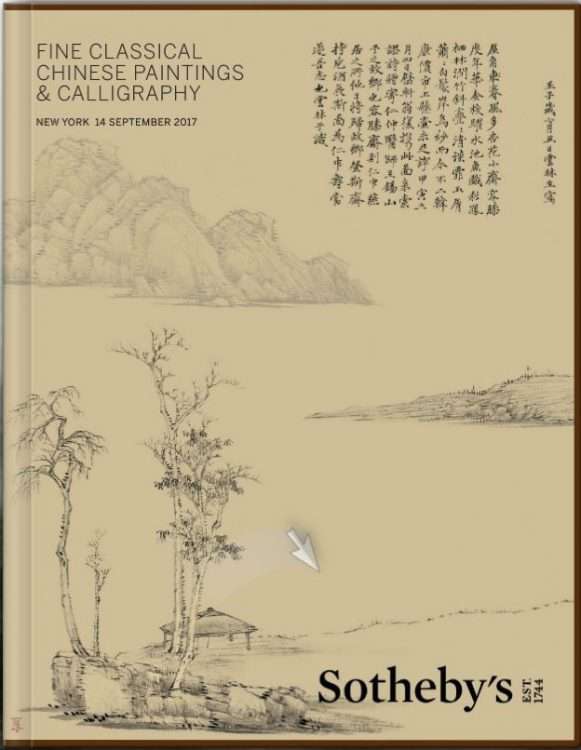
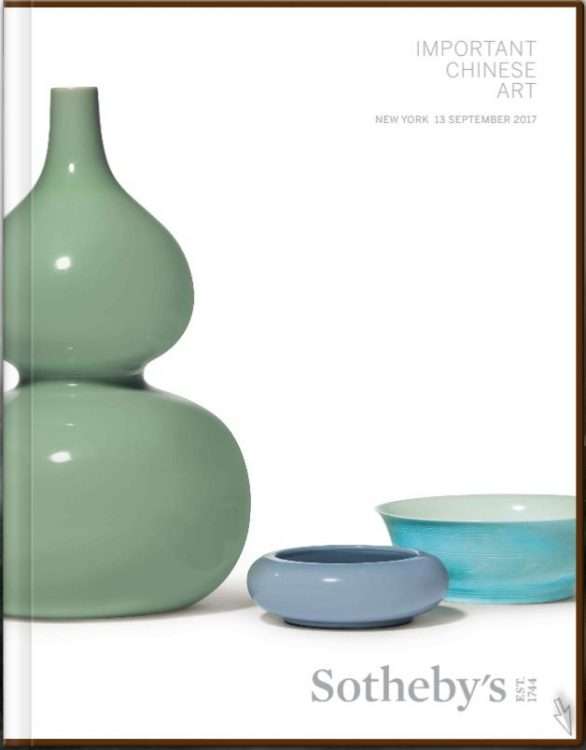
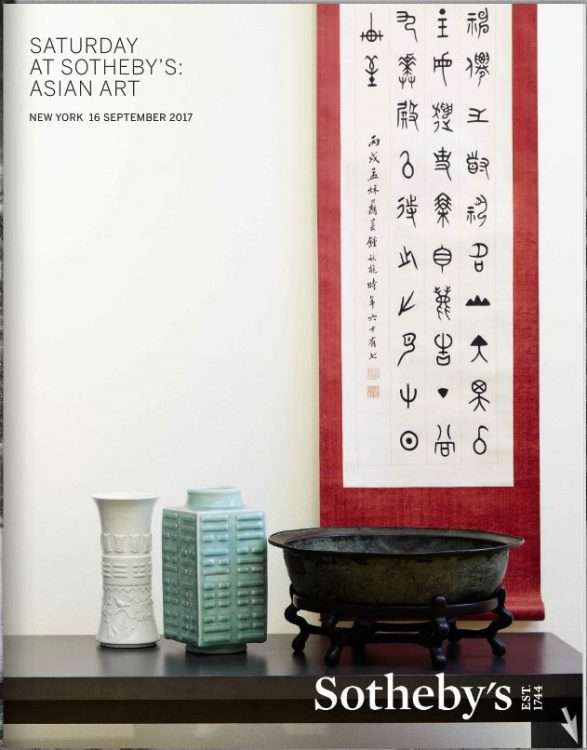
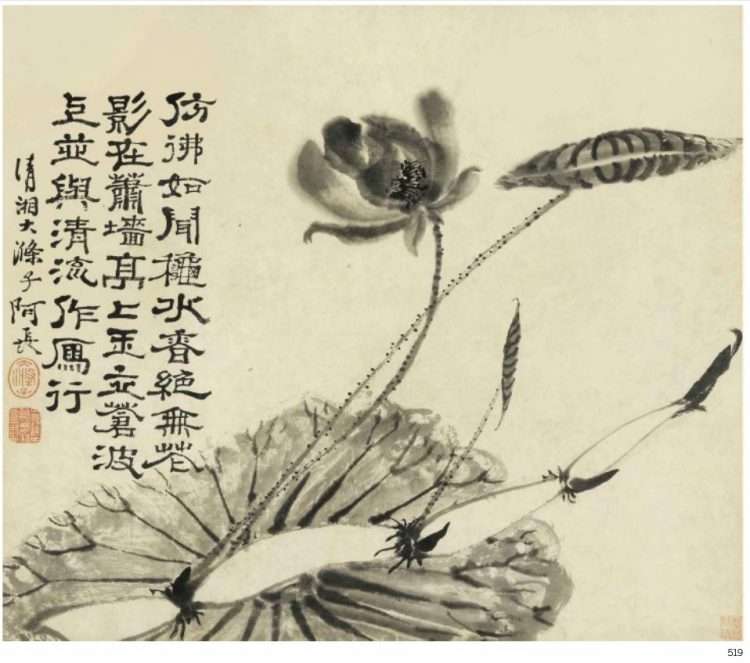
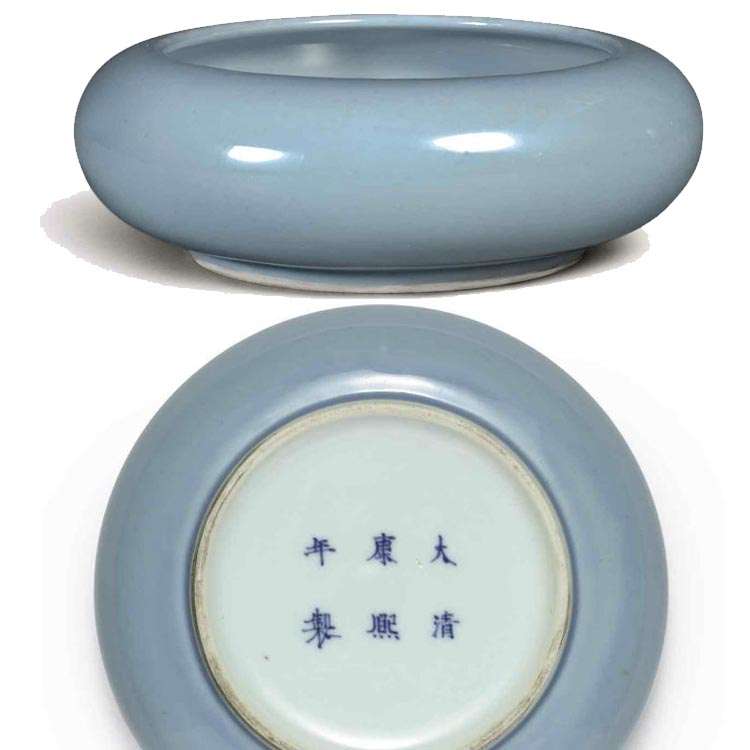
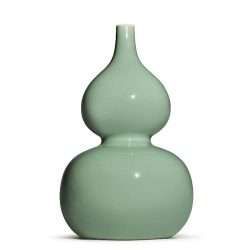
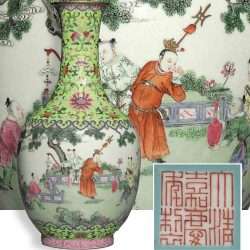
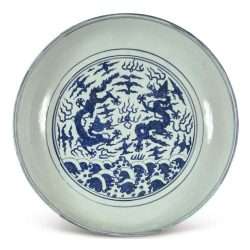
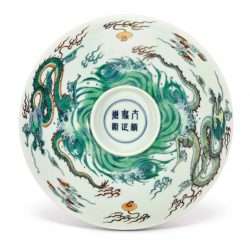
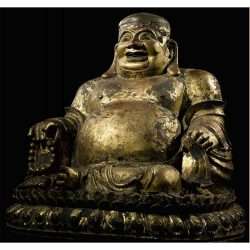
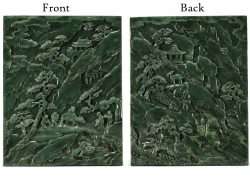
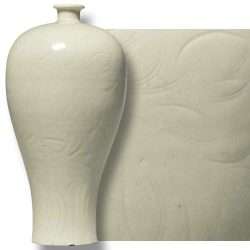
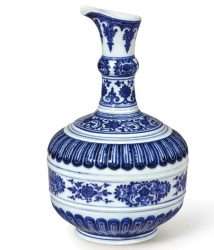
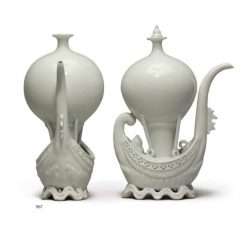
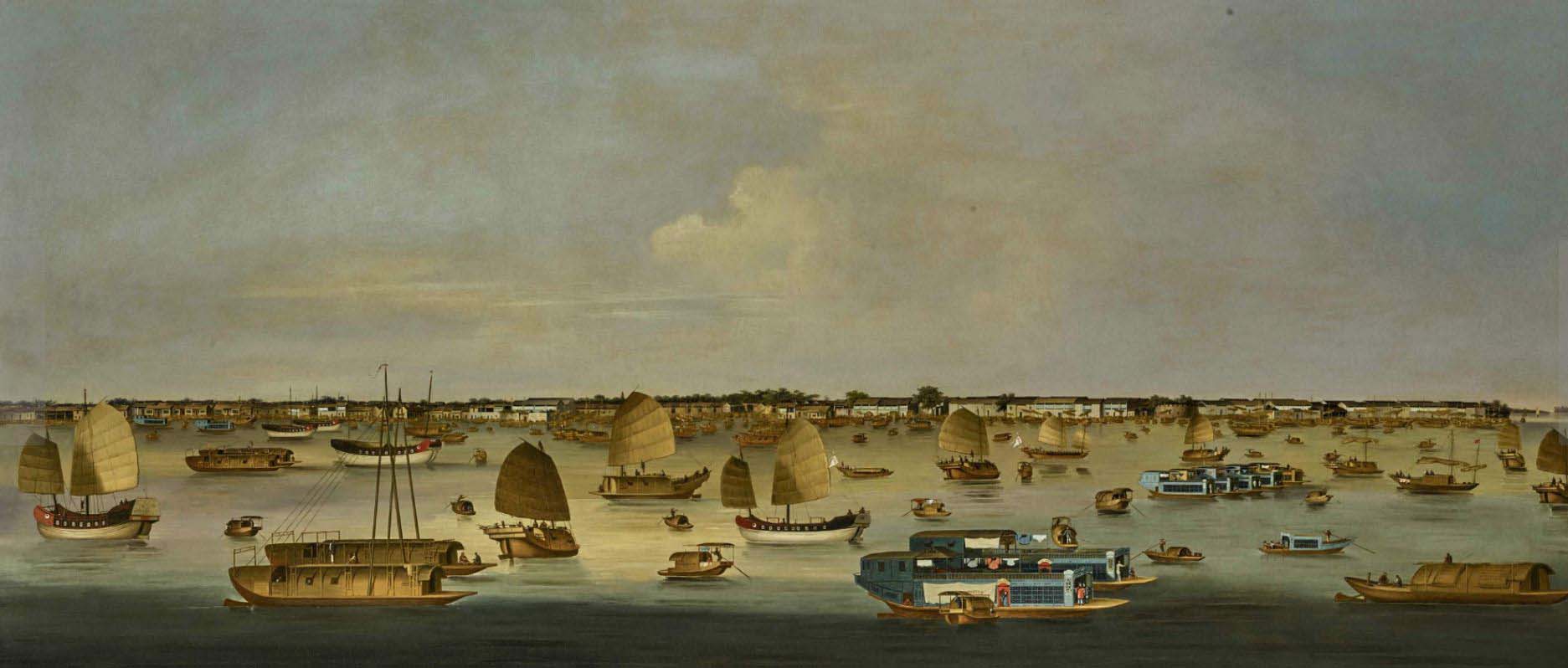
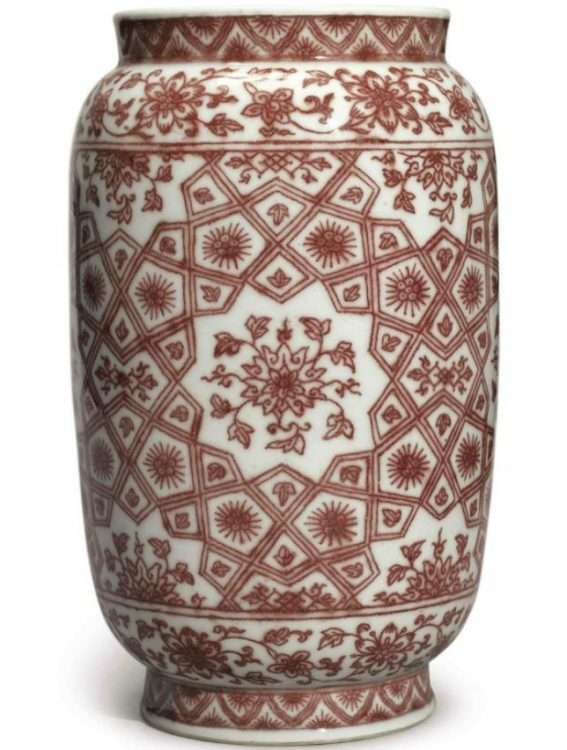
Leave a Reply